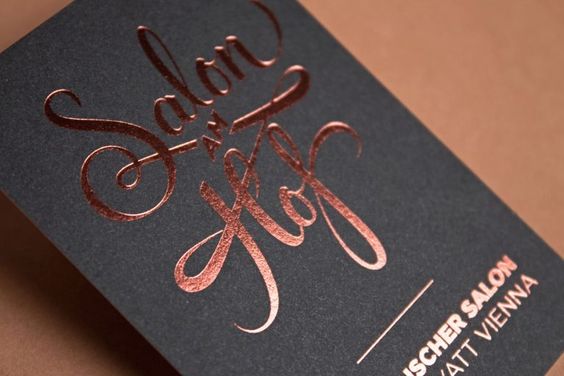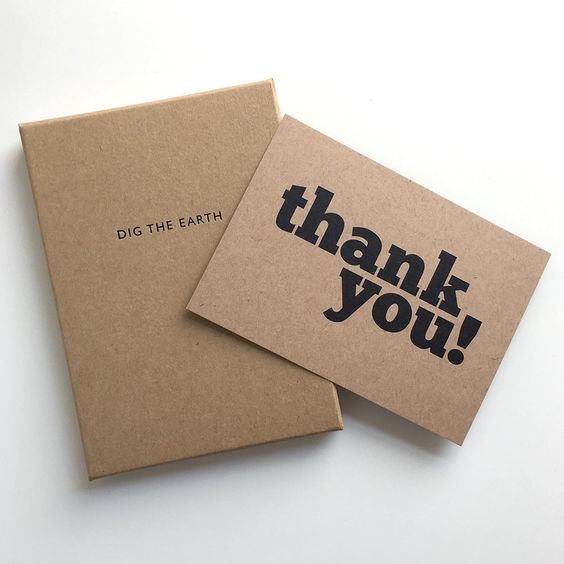Introduction
Bookbinding techniques play a significant role in creating beautiful and durable books. Whether you are a beginner looking to start bookbinding as a hobby or a professional seeking to enhance your craft, understanding different bookbinding techniques is essential. This comprehensive guide will delve into various bookbinding methods and discuss their advantages and disadvantages.
Common Bookbinding Techniques
Sewn Binding
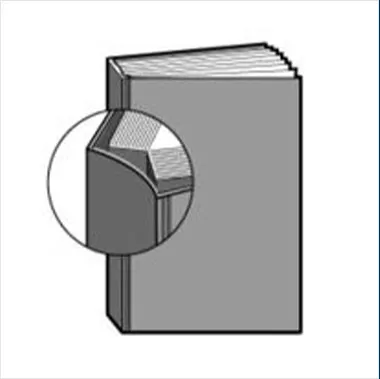
Sewn binding, also known as traditional bookbinding, is a classic method that has stood the test of time. It involves stitching together individual signatures using a needle and thread. This technique provides exceptional strength and durability to the book, making it perfect for long-lasting publications.
Advantages of Sewn Binding
● Provides superior strength and durability.
● It allows for easy opening and lays flat when opened.
● It is resistant to wear and tear, making it ideal for frequently used books.
Disadvantages of Sewn Binding
● It can be time-consuming due to the intricate stitching process.
● Requires specialized skills and tools.
● It may not be suitable for thin or lightweight publications.
Sewn Binding Detailed Description–The Art of Sewn Binding: A Comprehensive Guide
Perfect Binding
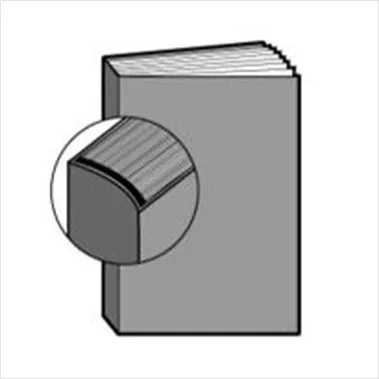
Perfect binding is a widely used technique in bookbinding, commonly seen in paperback books and magazines. It involves gluing the book’s pages and attaching them to a cover. This method offers a clean and professional finish, making it famous for various projects.
Advantages of Perfect Binding
● Provides a sleek and professional appearance.
● Cost-effective for large-scale production.
● Allows for easy printing and customization.
Disadvantages of Perfect Binding
● Less durable compared to sewn binding.
● Prone to pages falling out if not properly glued.
● Difficult to repair once bound.
Learn more about Perfect Binding-Exploring Perfect Binding: An In-Depth Guide
Case Binding
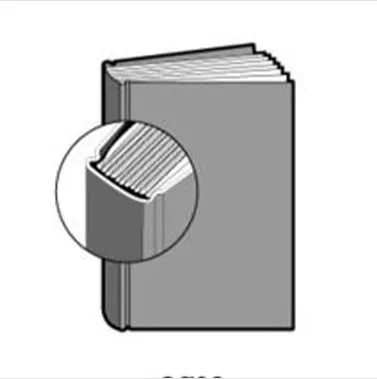
Case binding, or hardcover binding, is commonly used for high-quality books, such as novels and reference books. It involves attaching the book’s pages to a rigid cover made from cardboard or other materials.
Advantages of Case Binding
● Provides exceptional durability and protection.
● Offers a professional and polished look.
● Allows for various cover customization options.
Disadvantages of Case Binding
● It is a complex process requiring specialized skills and tools.
● It is more expensive compared to other binding methods.
● Limited flexibility in terms of opening and laying flat.
Find out more about Case Binding – Unlocking the Art of Case Binding: A Comprehensive Guide
Wire-O Binding
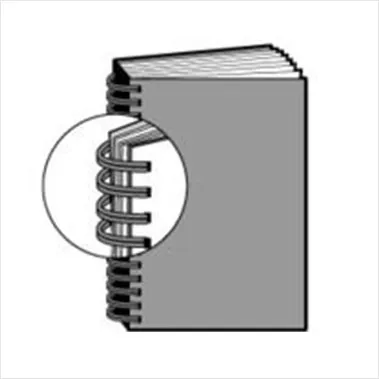
Wire-O binding is a popular choice for notebooks, calendars, and manuals. It involves using a metal wire loop to bind the book’s pages together. This technique offers easy page-turning and allows the reader to lay flat when open.
Advantages of Wire-O Binding
● Provides flexibility and ease of use.
● Allows for easy removal and addition of pages.
● Ideal for documents requiring frequent updates.
Disadvantages of Wire-O Binding
● Prone to damage if the wire loop is not properly secured.
● The metal wire may cause discomfort during extended use.
● Limited customization options for covers.
Wire-O Binding Demystified: A Comprehensive Guide
Find out more about Wire-O Binding – Wire-O Binding Demystified: A Comprehensive Guide
Smyth Sewn Binding
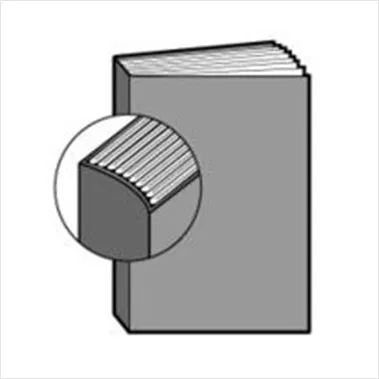
Smyth-sewn binding is a technique commonly used for high-quality hardcover books. It involves sewing together folded signatures with thread and reinforcing the book’s spine with a strip of fabric. This method provides excellent strength and durability.
Advantages of Smyth Sewn Binding
● Offers superior strength and longevity.
● It allows for easy opening and lays flat when opened.
● Ideal for books with heavy or glossy pages.
Disadvantages of Smyth Sewn Binding
● Requires specialized skills and tools.
● It can be time-consuming due to the sewing process.
● Less suitable for small or lightweight publications.
Find out more about Smyth Sewn Binding – Smyth Sewn Binding: A Comprehensive Guide
Saddle Stitch Binding
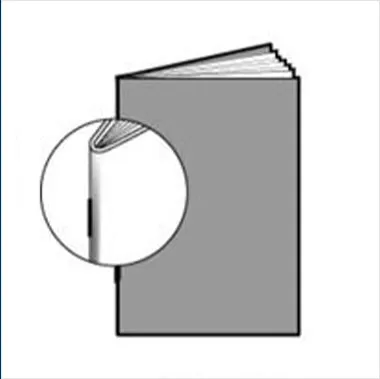
Saddle stitch binding is a straightforward and cost-effective method for brochures, magazines, and booklets. It involves stapling the pages together through the centerfold.
Advantages of Saddle Stitch Binding
● Provides a simple and economical solution for short booklets.
● Allows for easy printing and customization.
● Holds the pages securely with minimal effort.
Disadvantages of Saddle Stitch Binding
● Less durable compared to other binding techniques.
● Not suitable for thick books with a large number of pages.
● It isn’t easy to replace or repair pages once stapled.
Find out more about Saddle Stitch Binding –Saddle Stitch Binding: A Comprehensive Guide
Coptic Stitch Binding
Coptic stitch binding is a historic technique that originated in Egypt. It involves sewing the book’s sections and covers using a unique stitching pattern. This method adds visual appeal to the book and allows it to lay flat when opened, making it ideal for sketchbooks and journals.
Advantages of Coptic Stitch Binding
● It offers flexibility and allows the book to lay flat.
● Provides a visually striking and decorative appearance.
● Allows for easy removal and addition of pages.
Disadvantages of Coptic Stitch Binding
● It is time-consuming due to the intricate stitching process.
● Requires advanced stitching skills.
● Less suitable for large, heavy books.
Coptic Stitch Binding Method Details
Japanese Stab Binding
Japanese stab binding is a minimalist and elegant technique that originated in Japan. This method involves fastening the book’s pages and covers by creating decorative stitches along the spine. It is often used for artist books and poetry collections.
Advantages of Japanese Stab Binding
● Offers a unique and artistic appearance.
● Allows for creative variations in stitching patterns.
● Suitable for books with a small number of pages.
Disadvantages of Japanese Stab Binding
● Limited durability compared to other binding techniques.
● Less suitable for thick or heavy books.
● It can be challenging to replace or repair pages.
Japanese Stab Binding Method Details
Choosing the Right Technique
Factors to Consider When Selecting a Binding Technique
When choosing the appropriate bookbinding technique, several factors should be considered. These include the book’s purpose, the expected durability level, the number of pages, and the desired aesthetic appeal. Each technique has strengths and limitations, so evaluating these factors carefully is crucial.
Tailoring Your Choice to the Project’s Requirements
The specific requirements of your project play a vital role in determining the most suitable bookbinding technique. For instance, a novel may benefit from the durability and professional appearance of case binding. At the same time, a small art journal may require the flexibility and artistic charm of Coptic stitch binding. To ensure the final product meets your expectations, you can also seek out a professional book printing factory to customize your bookbinding solution. Tailoring your choice to your project’s needs is essential for achieving the desired results.
Conclusion
Understanding different bookbinding techniques is vital for anyone interested in creating books. Each method offers unique advantages and disadvantages when embarking on a bookbinding project. Whether you’re a novice or an experienced bookbinder, exploring and experimenting with various techniques can enhance your skills and enable you to create extraordinary publications. So, go ahead, dive into the world of bookbinding, and unleash your creativity!

